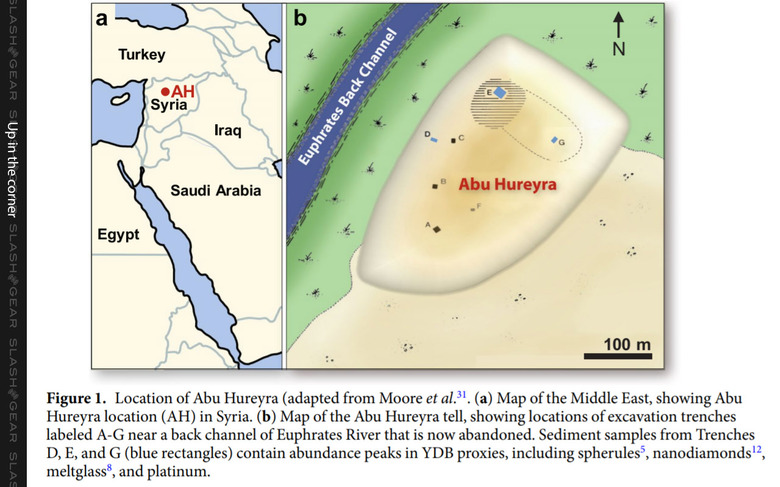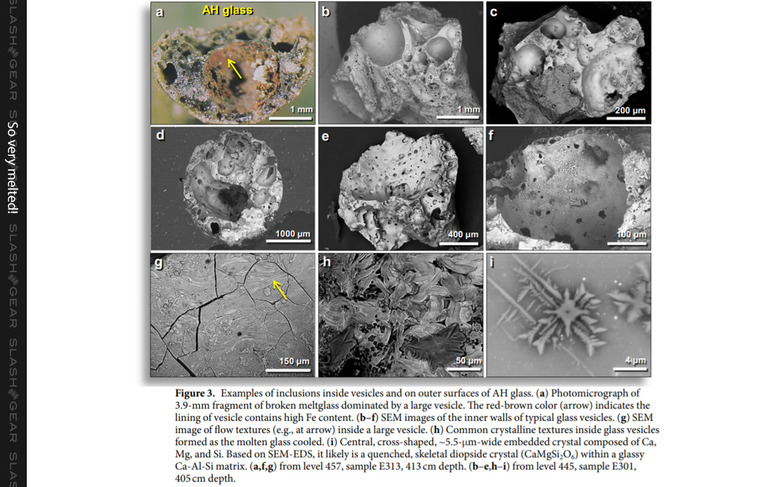How A Meteorite Destroyed One Of Humanity's First Settlements
To the South of Turkey, to the West of Iraq, to the North of Saudi Arabia and the Northeast of Egypt is a country called Syria. This country is home to a site of some major historical, cultural, and evironmental significance. This site was one of the first known human settlements on earth: Abu Hureyra. A report from researchers from UC Santa Barbara showed that this site may very well have been annihilated by the cosmic impact of a well-placed comet.
Upon studying the masses of materials recovered from Abu Hureyra, researchers found meltglass. They found meltglass on its own, they found meltglass splashed onto building material and animal bones. They found meltglass aplenty. They call this meltglass "AH Glass" (Abu Hureyra glass).
The appearance of melted materials is not uncommon in archaeological digs. It was this meltglass's composition was such that no common means could account for it. This meltglass could not have been made by lightning, nor by human-made fire, or even a volcano.

In the Abu Hureyra meltglass contained such minerals as corundum, mullite, and suessite. Suessite has been found relatively commonly in meteorites discovered by humans in modern times. Teresstrial suessite is rare enough that it's more likely this mineral originated on a shattered comet, struck Abu Hureyra in a meteorite, and melted into the glass these researchers reported on the site.
The melting points of the minerals found in meltglass on the site of this discovery were approximately 2044°C, 1840°C, and 2300°C – very, very hot. Because of the composition of these findings and the probabilities of formation through any sort of means, the study's findings were that this site felt the impact of bits of material that fell after the breaking up of a comet approximately 12,800 years ago.

"The formation of AH glass appears to require the occurrence of an intense and sudden high‐temperature event similar to known tektite-producing impacts. Te collective evidence is best explained by the hypothesis that at least one high-energy, high-temperature, hypervelocity event occurred near Abu Hureyra ~12,800 years ago, most likely an airburst possibly accompanied by ground impacts by impactor fragments."
This isn't the only place this sort of fragment hit. Citing multiple studies done over the past several decades, the researchers on this paper suggested the possibility of "multiple airbursts/impacts across at least four continents." Connecting these dots might well allow us to connect dots between impact sites, giving us a sort of photograph of a single moment in time, back to the point at which humans stopped relying solely on hunting and gathering and started farming the land.
Earlier research on potential climate change / cosmic impact (of the sort this new research suggests) for this period in human history, with "multi-continental airbursts, possibly caused by the debris stream from a short-period comet."
This research suggested that this peppering of our planet with comet bits might've been the very event (or series of events) that pushed humans into their agricultural era. This paper points to researchers Moore and Kennett, who hypothesized that "impact-triggered climate change caused the prehistoric villagers at Abu Hureyra to transition from hunting/gathering to cultivation, indicative of earliest agriculture, one of the most significant cultural transformations in human history."

For more information, take a peek at two research papers to start. The earlier paper is Moore, A. & Kennett, D. Cosmic impact, the Younger Dryas, Abu Hureyra, and the inception of agriculture in Western Asia. Eurasian Prehist 10, 57–66 (2013).
The more recent paper is Moore, A.M.T., Kennett, J.P., Napier, W.M. et al. Evidence of Cosmic Impact at Abu Hureyra, Syria at the Younger Dryas Onset (~12.8 ka): High-temperature melting at >2200 °C. Sci Rep 10, 4185 (2020). Find this paper with DOI:0.1038/s41598-020-60867-w – it's an interesting read!
NOTE: Thanks to the completion of the Taqba Dam (Euphrates Dam) in 1973, the site on which this research centers is now deep under water. Without resources gathered by archaeologists prior to the building of the dam, this research might never have been possible.
It might still be possible for divers to continue gathering materials from Abu Hureyra if given the opportunity by local government officials. If you're planning on making this dive, let us know!
